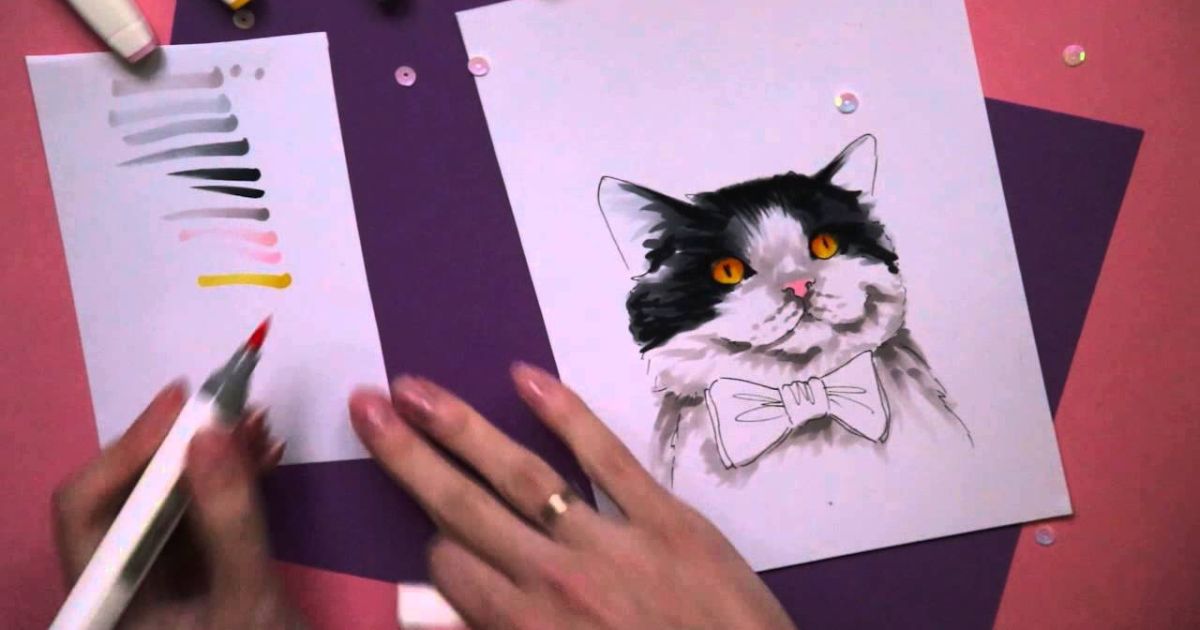Introduction: The Allure of Cat Drawing
Drawing:a4z_-ymtkr8= cat is a captivating activity that has charmed artists for centuries. Cats, with their unique shapes and personalities, offer endless inspiration for both beginner and experienced artists alike. This complete guide will walk you through the intricate world of feline art, from understanding cat anatomy to showcasing your finished pieces.
Whether you’re drawn to the fluffy Persian or the sleek Siamese, small kittens or big wildcats, this guide will help you capture the beauty and charm of these fascinating animals. Let’s embark on this creative journey and unlock your potential in drawing:a4z_-ymtkr8= cat!
The art of cat sketching isn’t just about replicating what you see; it’s about capturing the essence of these enigmatic creatures. As you delve into feline drawing techniques, you’ll discover that cats are not just subjects, but muses that can inspire a lifetime of artistic exploration.
Materials Needed for Cat Drawing: drawing:a4z_-ymtkr8= cat
Before you start your drawing:a4z_-ymtkr8= cat adventure, it’s crucial to gather the right tools. Here’s a comprehensive list of materials you’ll need:
- Pencils: A range of graphite pencils from 2H (hard) to 6B (soft) for varying line weights and shading.
- Paper: High-quality drawing paper that can handle both pencil and ink.
- Erasers: A kneaded eraser for lifting graphite and a vinyl eraser for clean removal.
- Colored pencils or markers (optional): For adding color to your drawings.
- Sketchbook: To keep all your drawing:a4z_-ymtkr8= cat practice in one place.
- Reference images: Photos or live cats for accurate representation.
Setting up your workspace is equally important. Find a spot with good lighting and enough room to spread out your tools. A comfortable chair and a tilted drawing board can help prevent fatigue during long drawing sessions.
“The right tools don’t make the artist, but they can certainly help unleash creativity.” – Unknown
Consider investing in a few additional items to enhance your drawing:a4z_-ymtkr8= cat experience:
- Blending stumps: Useful for smoothing out shading and creating soft fur textures.
- Drawing pens: For adding fine details or creating ink drawings.
- Watercolor pencils: These versatile tools can be used dry like regular colored pencils or activated with water for a painterly effect.
- Fixative spray: To protect your finished drawings from smudging.
Remember, while having good materials is helpful, the most important tool is your observational skills and practice. Even with basic supplies, consistent practice will improve your cat drawing abilities.
Understanding Cat Anatomy for drawing:a4z_-ymtkr8= cat
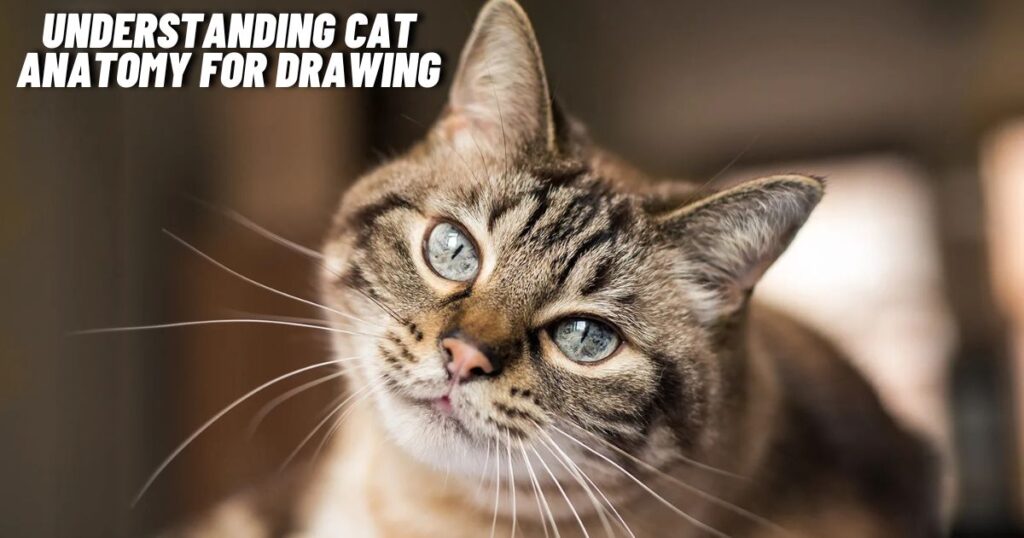
To create realistic cat drawings, a solid grasp of cat anatomy is essential. Cats have unique body structures that contribute to their graceful movements and playful nature. Let’s break down the key components:
- Head: Typically round with a triangular face
- Torso: Flexible spine with a pronounced ribcage
- Legs: Muscular, with hind legs slightly longer than front legs
- Tail: Long and expressive, used for balance
Understanding how these parts work together is crucial for accurate proportions in your drawing:a4z_-ymtkr8= cat. Pay close attention to how a cat’s muscles move when they stretch, jump, or relax. This knowledge will bring life to your drawings.
Facial features play a significant role in capturing a cat’s personality. Focus on:
- Ears: Triangular and highly mobile
- Eyes: Large, almond-shaped, with vertical pupils
- Whiskers: Long and sensitive, crucial for spatial awareness
| Body Part | Characteristics | Artistic Focus |
| Head | Round with triangular face | Emphasize ear placement and eye shape |
| Torso | Flexible, pronounced ribcage | Show curve of spine in various poses |
| Legs | Muscular, hind legs longer | Capture tension in crouching or leaping poses |
| Tail | Long, expressive | Use to convey mood and balance |
Delving deeper into feline anatomy, consider these additional points:
- Paws: Cats have retractable claws, which are often hidden when relaxed. The paw pads are soft and help with silent movement.
- Spine: The cat’s spine is extremely flexible, allowing for those characteristic stretches and contortions.
- Whisker pads: The area where whiskers emerge is often slightly raised, giving cats their distinctive cheek profile.
Study the skeletal structure of cats to better understand how their bodies move. This will greatly enhance your ability to draw cats in various poses, from the classic sitting position to more dynamic action scenes.
Choosing the Right Pose for Your Cat Drawing: drawing:a4z_-ymtkr8= cat
Selecting the perfect pose is crucial when drawing:a4z_-ymtkr8= cat. The pose you choose can convey a lot about the cat’s personality and mood. Here are some popular poses to consider:
- Sitting: A classic pose that showcases the cat’s elegant form
- Stretching: Highlights the cat’s flexibility and muscular structure
- Sleeping: Captures the cat’s peaceful and relaxed nature
- Playing: Demonstrates the cat’s agility and playful spirit
- Grooming: Shows the cat’s attention to detail and flexibility
When choosing a pose, consider what aspect of the cat’s personality you want to highlight. A crouching pose might suggest a cat ready to pounce, while a curled-up sleeping pose portrays comfort and contentment.
Using reference images can be incredibly helpful when drawing:a4z_-ymtkr8= cat in various poses. Observe real cats or use high-quality photographs to study how their bodies move and conform to different positions.
Consider these additional poses to expand your repertoire:
- Stalking: Low to the ground, showcasing the predatory nature of cats
- Climbing: Demonstrates agility and the cat’s love for high places
- Leaping: Captures the cat’s incredible athleticism
- Alert sitting: Ears perked, tail slightly raised, conveying curiosity or alarm
- Lounging: Relaxed, often with belly exposed, showing trust and comfort
Remember, the key to drawing realistic cat poses is understanding the underlying structure and how it moves. Practice sketching quick gesture drawings to capture the essence of different cat poses before refining the details.
Step-by-Step Guide to Drawing a Cat: drawing:a4z_-ymtkr8= cat
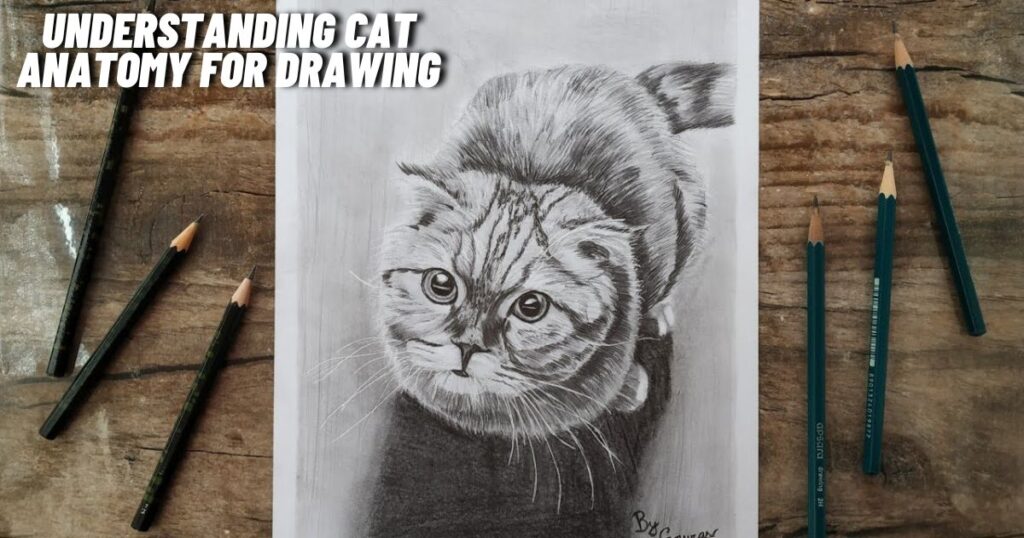
Now, let’s dive into the actual process of drawing:a4z_-ymtkr8= cat. Follow this step-by-step approach to create your feline masterpiece:
- Start with basic shapes: Begin by sketching simple shapes to form the cat’s structure. Use circles for the head and body, and ovals for the legs.
- Refine the silhouette: Connect these shapes to create a more defined outline of the cat. Pay attention to the curve of the back and the positioning of the legs.
- Add facial features: Sketch in the eyes, nose, and mouth. Remember, cat eyes are usually almond-shaped and placed at an angle.
- Draw the ears: Add triangular ears on top of the head. The position of the ears can convey the cat’s mood.
- Detail the body: Begin adding fur texture and refining the shape of the legs and paws.
- Finish with fine details: Add whiskers, individual fur strands, and any distinguishing marks or patterns.
Remember, the key to improving your drawing:a4z_-ymtkr8= cat skills is practice. Don’t be discouraged if your first attempts don’t look perfect. With time and patience, you’ll see significant improvement in your work.
To further refine your cat drawing skills, consider these additional steps:
- Add shading: Use varying pressure or different pencil grades to create depth and form.
- Refine fur texture: Observe how fur grows in different directions on various parts of the cat’s body.
- Enhance the eyes: Pay special attention to the reflection and depth in the eyes, as they bring life to your drawing.
- Background elements: Consider adding simple background elements to provide context for your cat drawing.
Practice each step individually before combining them. For instance, spend time just drawing cat eyes or paws. This focused practice will improve your overall cat drawing skills.
See Also: Kamohai Kalama Age, Biography, Wife, Birthday and Family
Adding Personality to Your Cat Drawing: drawing:a4z_-ymtkr8= cat
Capturing a cat’s unique personality is what transforms a good drawing into a great one. When drawing:a4z_-ymtkr8= cat, consider these elements to infuse character into your artwork:
- Facial expressions: The eyes and mouth can convey a wide range of emotions. A slight squint can show contentment, while wide eyes might indicate surprise or fear.
- Body language: The position of the tail, ears, and overall posture can speak volumes about a cat’s mood.
- Distinctive features: Every cat has unique markings or characteristics. Including these can make your drawing more personalized.
- Environmental elements: Adding toys, a favorite resting spot, or other cats can provide context and tell a story through your drawing.
“In art, as in life, it’s not just about replication, but interpretation. A great cat drawing captures the essence of the feline spirit.” – Anonymous Artist
To further enhance the personality in your cat drawings:
- Breed characteristics: Different cat breeds have distinct features. Research the specific traits of the breed you’re drawing.
- Age considerations: Kittens have different proportions and playfulness compared to adult cats. Senior cats might have a more dignified or relaxed demeanor.
- Action and interaction: Show the cat engaging with its environment – batting at a toy, watching a bird, or interacting with another pet.
- Exaggeration: Sometimes slightly exaggerating certain features can emphasize personality traits.
Remember, the goal is not just to draw a cat, but to tell its story through your art. Observe cats in real life whenever possible to capture those unique moments that reveal their individual personalities.
Coloring Techniques for Cat Drawings: drawing:a4z_-ymtkr8= cat
Adding color to your drawing:a4z_-ymtkr8= cat can bring it to life. Here are some techniques to consider:
- Layering: Start with a base color and gradually add layers for depth and texture.
- Blending: Use a blending tool or your finger to soften color transitions.
- Highlighting: Add lighter colors to areas where light would naturally hit the cat’s fur.
- Shadowing: Use darker shades in areas that would be in shadow to create dimension.
- Texture: Create the illusion of fur by using short, directional strokes that follow the natural growth of a cat’s coat.
Remember, the key to realistic coloring is observation. Study photographs of cats to understand how light interacts with their fur and how colors blend together naturally.
Additional coloring tips for your drawing:a4z_-ymtkr8= cat:
- Color theory: Understand how complementary colors can make your cat drawing pop.
- Underpainting: Start with a light wash of color to establish base tones before adding details.
- Dry brush technique: Use a nearly dry brush with colored pencils or paint for fur texture.
- Mixed media: Experiment with combining different mediums like watercolor and colored pencils for unique effects.
- Digital coloring: If you’re comfortable with digital tools, explore software like Photoshop or Procreate for endless color possibilities.
Regardless of the medium you choose, always start with light colors and gradually build up to darker shades. This allows for more control and helps avoid overwhelming the drawing with too much color too quickly.
Common Mistakes to Avoid When Drawing Cats: drawing:a4z_-ymtkr8= cat
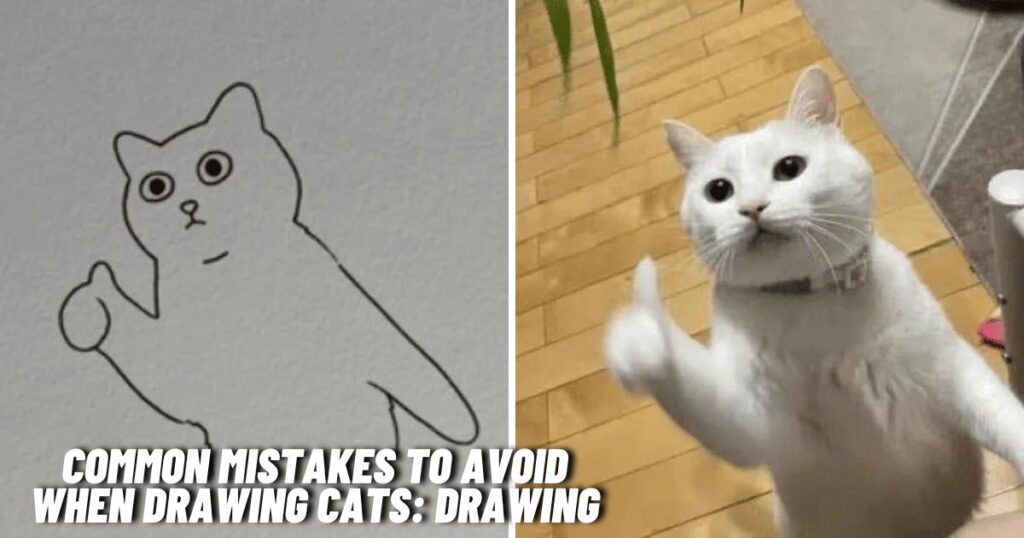
Even experienced artists can fall into common pitfalls when drawing:a4z_-ymtkr8= cat. Here are some mistakes to watch out for:
- Incorrect proportions: Cat heads are often smaller in relation to their bodies than you might think.
- Oversimplified paws: Cat paws are complex structures. Don’t forget to include individual toes and paw pads.
- Uniform fur texture: Cat fur varies in length and texture across the body. Pay attention to these subtle differences.
- Neglecting whiskers: Whiskers are a crucial part of a cat’s sensory system and appearance. Don’t forget to include them!
- Stiff poses: Cats are fluid and flexible. Avoid making your drawings look too rigid or unnatural.
By being aware of these common issues, you can actively work to avoid them in your drawing:a4z_-ymtkr8= cat practice.
Additional mistakes to be mindful of:
- Unrealistic eyes: Cat eyes are not perfectly round. Study their unique almond shape and pupil variations.
- Ignoring the skeleton: Understanding the underlying bone structure helps create more accurate poses.
- Overworking the drawing: Sometimes less is more. Know when to stop adding details.
- Inconsistent lighting: Ensure your shading and highlights correspond to a consistent light source.
- Neglecting negative space: The space around your cat is just as important as the cat itself for a balanced composition.
Remember, mistakes are part of the learning process. Use them as opportunities to improve your drawing:a4z_-ymtkr8= cat skills.
Inspiration from Famous Cat Artists: drawing:a4z_-ymtkr8= cat
Many renowned artists have found inspiration in cats. Studying their work can provide valuable insights for your own drawing:a4z_-ymtkr8= cat journey. Here are a few notable cat artists:
- Théophile Steinlen: Known for his Art Nouveau posters featuring cats.
- Louis Wain: Famous for his psychedelic cat paintings.
- Léonor Fini: Surrealist painter who often incorporated cats into her work.
- Suzanne Valadon: Impressionist artist who frequently painted cats in domestic settings.
Analyze their techniques, style, and how they captured the essence of cats in their artwork. This can inspire new approaches in your own drawing:a4z_-ymtkr8= cat practice.
Additional artists to explore:
- Tsuguharu Foujita: Japanese-French painter known for his elegant cat portraits.
- Gottfried Mind: Swiss painter nicknamed “Cat Raphael” for his lifelike cat drawings.
- Henriette Ronner-Knip: 19th-century Dutch artist famous for her detailed cat paintings.
- Ai Weiwei: Contemporary artist who has incorporated cats into his installations and photography.
Study how these artists approached feline subjects differently, from realistic portrayals to abstract interpretations. This can broaden your perspective on drawing:a4z_-ymtkr8= cat and inspire you to experiment with various styles.
Showcasing Your Cat Drawings: drawing:a4z_-ymtkr8= cat
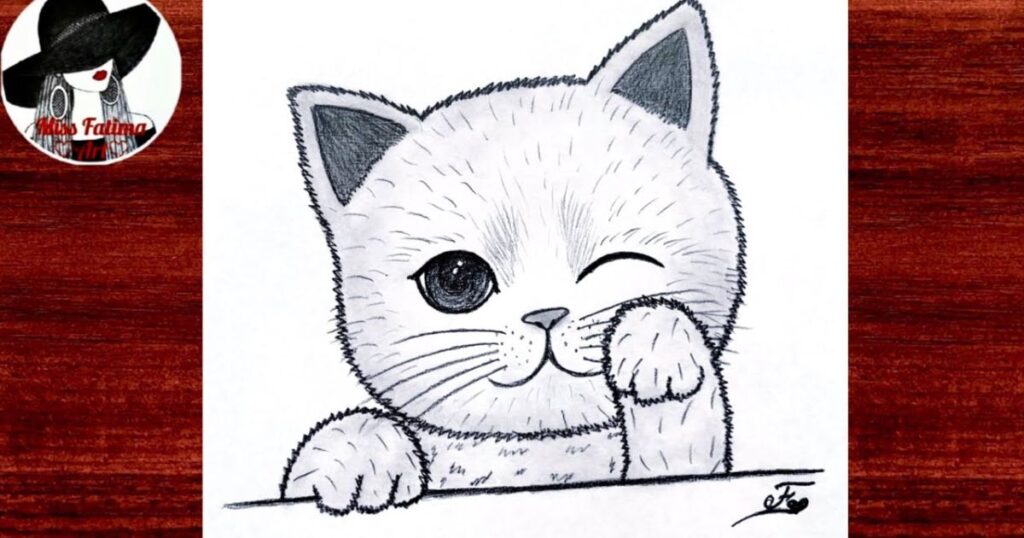
Once you’ve honed your drawing:a4z_-ymtkr8= cat skills, it’s time to share your work with the world! Here are some ways to showcase your feline art:
- Online portfolios: Platforms like Behance or DeviantArt are great for displaying your work.
- Social media: Instagram and Pinterest are particularly popular for cat art.
- Local exhibitions: Look for cat-themed art shows or cafe galleries in your area.
- Cat-centric publications: Submit your work to magazines or websites dedicated to cats.
- Art communities: Join online forums or local groups focused on animal art.
Sharing your drawing:a4z_-ymtkr8= cat creations not only allows you to receive feedback but also connects you with fellow cat art enthusiasts.
Additional ways to showcase your cat drawings:
- Create merchandise: Turn your cat drawings into prints, t-shirts, or stickers.
- Illustration work: Offer your services for cat-related books or magazines.
- Pet portraits: Start a side business creating custom portraits of people’s beloved cats.
- Charity auctions: Donate your cat art to animal shelter fundraisers.
- Digital galleries: Create a personal website to showcase your cat drawing portfolio.
Remember, sharing your art is not just about gaining recognition, but also about connecting with others who share your passion for cats and art.
Conclusion
Drawing:a4z_-ymtkr8= cat is a rewarding journey that combines artistic skill with a love for these fascinating creatures. From understanding feline anatomy to capturing personality and mastering coloring techniques, each step brings you closer to creating captivating cat art.
Remember, the key to improvement is consistent practice and observation. Don’t be afraid to experiment with different styles, poses, and techniques as you develop your unique approach to drawing:a4z_-ymtkr8= cat.
Whether you’re a beginner just starting out or an experienced artist looking to refine your skills, the world of cat drawing offers endless possibilities for creativity and expression. Each cat you draw is an opportunity to capture a unique personality, a fleeting moment, or a timeless feline grace.
As you progress in your drawing:a4z_-ymtkr8= cat journey, consider these final thoughts:
- Develop your own style: While learning from others is valuable, don’t be afraid to let your personal style shine through in your cat drawings.
- Experiment with different mediums: Try various tools and techniques to find what works best for you in capturing the essence of cats.
- Draw from life: Whenever possible, sketch real cats. This will improve your understanding of feline anatomy and behavior.
- Tell stories through your art: Use your cat drawings to convey emotions, narratives, or social commentary.
- Embrace imperfections: Sometimes the quirks in your drawings can add character and charm to your cat portraits.
Remember that every great artist started as a beginner. Your first attempts at drawing:a4z_-ymtkr8= cat may not be perfect, but with persistence and practice, you’ll see remarkable improvements over time.
“In the world of art, there is no such thing as a mistake. Every stroke of the pencil is a step towards mastery.” – Bob Ross
As you continue to explore the fascinating world of cat art, you’ll discover that drawing cats is not just about recreating their physical appearance, but about capturing their spirit, their mystery, and the special bond they share with humans.
So grab your sketchbook, sharpen your pencils, and let the captivating world of cats inspire your artistic journey. Whether you’re drawing a majestic tiger or a playful house cat, each drawing is a celebration of these extraordinary creatures.
Remember, the joy of drawing:a4z_-ymtkr8= cat lies not just in the finished product, but in the process itself. Enjoy every moment of observation, every line you draw, and every new technique you master. Your passion for cats and art will shine through in every drawing you create.
In conclusion, drawing:a4z_-ymtkr8= cat is more than just a hobby—it’s a way to connect with the feline world, to express your creativity, and to share your love for these enigmatic creatures with others. So keep practicing, keep observing, and most importantly, keep enjoying the wonderful journey of cat artistry.
Happy drawing, and may your pencils always be sharp and your inspiration endless in your quest to capture the magic of cats on paper!

Welcome to the heart of our website! The Admin Dashboard is your command center, where you can manage all aspects of the site effortlessly. Here, you’ll find intuitive tools for content management, user analytics, and system settings. Customize, control, and optimize your site experience with a few clicks. Whether you’re updating content, monitoring traffic, or fine-tuning user permissions, everything you need is right at your fingertips. Dive in and take charge!
